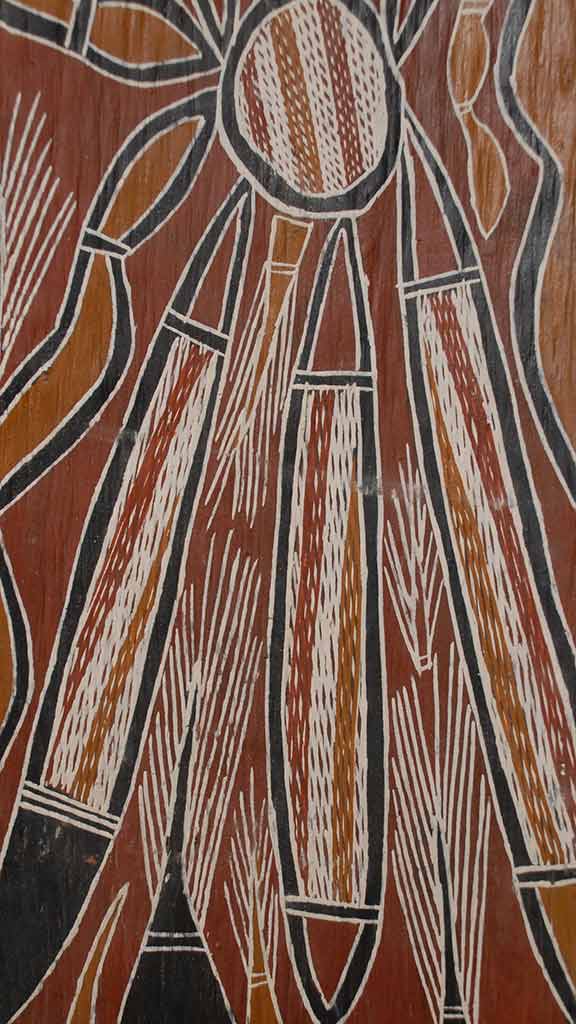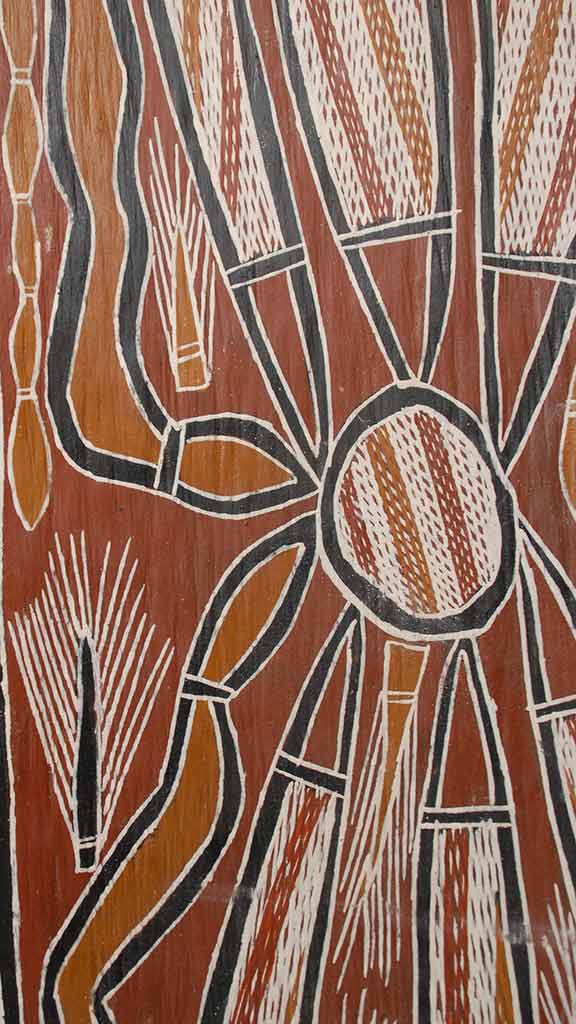
Featured Object: Jinang Bark Painting "Dreamtime"
- Post Date: 1/11/2008
- Author: Peter Banjurljurl
- Reading Time: 2 minute read
This Aboriginal bark painting, by Peter Banjurljurl of the Jinang peoples in the Northern Territory of Australia, represents "Dreamtime". The highly stylized image is believed to represent an old man dreaming of digging a circular hole for water. The particular style is a reflection of the artist’s regional and individual identity.
“Dreamtime” refers to a “time before time” in Aboriginal cosmology, when ancestral spirits known as Wondjina arose from the earth and traveled across Australia, establishing the patterns of daily life. They created the landscape, the animals, and even the people, assuring that everyone had the knowledge necessary for survival. Once their work was complete and the Aborigines’ existence firmly established, the spirits returned to the earth. Their wanderings are remembered in the oral traditions of the Aborigines, recalled in their art and music, and at times reentered through rituals in which people embody the Wondjina and retrace their travels.
The paths and creations of the ancestral spirits are considered sacred. Presumably, this painting reconnects to the “dreaming” to portray an activity or site, perhaps a particular waterhole, that is sacred to the Jinang. If the story is one reserved for initiated members, its full meaning will intentionally be kept from the viewers.
Often the artist devotes more time to the making of the materials than to the painting process. The bark is usually removed from trees during the wet season then cured by fire and flattened with weights. The image is painted in the traditional red and yellow from natural ochre pigments, black from charcoal, and white from fine clay. The pigments may have been fixed with PVA glue or more traditional binders, such as bee's wax, sap, or plant juices. Paint brushes are usually made from strips of stringy bark or green twigs. Few early works done on perishable material, such as bark paintings and woodcarvings, survive to the present day. Thankfully, the artistic traditions have been preserved in the works of modern Aboriginal people.
-
- Share:
- Subscribe to Newletter
- Giving

